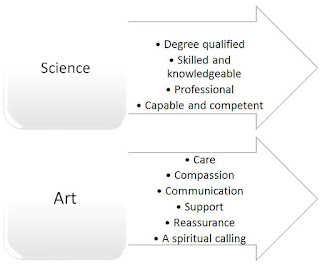Week 4 || Medicine + Technology + Art

As a third year nursing student, I spend up to 12 hours at a time in the hospital setting, being surrounded by various medical equipment and procedures. When Professor Vesna described different medical scans such as CT scan, MRI, and x-ray as art, I had to stop and think for a second. Can such devices that are used to diagnose illnesses and look into the human body be considered art? https://www.youtube.com/watch?v=DakhSjja5y0 Or how can these medical advancements not be considered to be art? There is, indeed, an art to reading and understanding the internal workings of the complexity that is the human body. Outwardly, human anatomy may seen healthy and tan and active, yet internally there can be a completely opposite reality. Art evokes emotion. The results of the lines and contours of these graphs and x-rays evoke emotion. With a single mass noted on an x-ray strip, there can be heart-shattering sadness and agonizing emotional turmoil and pain. Yet, the diminishment or d



